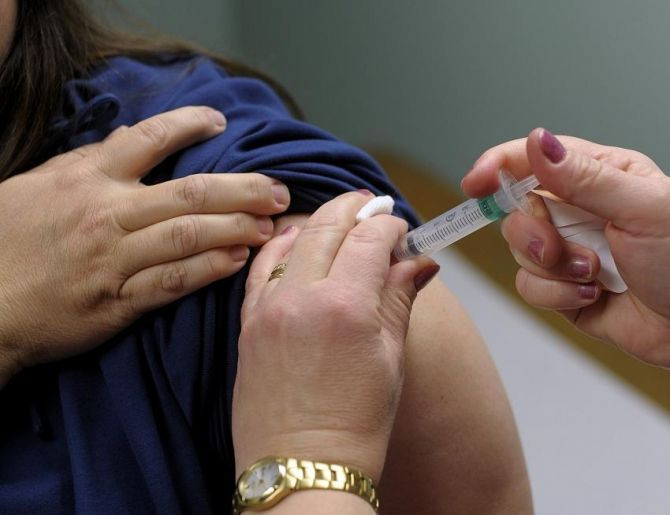105 Children Died From Flu This Season, Most Were Not Vaccinated

With six more deaths reported of children in the U.S. this winter season from the flu, health officials are sending out alerts that parents and health officials should be more conscious of this life-threatening risk and the easy way to prevent it. Pediatric flu deaths are defined as children under the age of 18 who have died as a result of or from complications from a flu infection.
So far 105 children from across the United States having died from the influenza virus in the 2012 to 2013 flu season. The Centers for Disease Control and Prevention has issued a warning that parents should take heed, especially because 90 percent of the children who never recovered had not been vaccinated.
Some 60 percent of the children who died were in a "high risk" category for contracting the illness. Children younger than 5 years of age and children of any age with certain chronic health conditions, including asthma or other lung disorders, heart disease, or a neurologic or neurodevelopmental disorder are at high risk of developing serious complications from flu infection.
According to the CDC: "In the 2003-2004 season, 153 pediatric deaths were reported to CDC from 40 states. Flu-associated pediatric deaths became nationally reportable the following season. Since that time, reported pediatric deaths during regular influenza seasons have ranged from 34 deaths (during 2011-2012) to 122 deaths (during 2010-2011). However, during the 2009 H1N1 influenza pandemic, which lasted from April 15, 2009 to Oct. 2, 2010, 348 pediatric deaths were reported to CDC."
The flu vaccine has been recommended for all children between the ages of six months and 18 years since the 2008 flu season. Vaccination of all groups was suggested in the 2010 to 2011 flu season. Although these sweeping recommendations have been made, childhood vaccination rates have barely risen.
The CDC's survey of vaccination statistics indicates that only 40 percent of children received the flu vaccine in this year's flu season by November 2012. The final estimation of child vaccination only rose to 52 percent.
Annual flu vaccines are suggested by the CDC as the first line of defense against influenza infection. Antiviral drugs, such as Tamiflu, are a powerful secondary line of defense once someone has become ill and prevents progression of the illness.
The flu vaccine has yearly differences in efficacy because multiple flu viruses spread through the population, the virus changes yearly and vaccine preparations occur months before the flu season starts. This leads to much educated guessing as to the major strains of flu that will effect the population. This years flu vaccine was around 60 percent effective in preventing the flu.



























